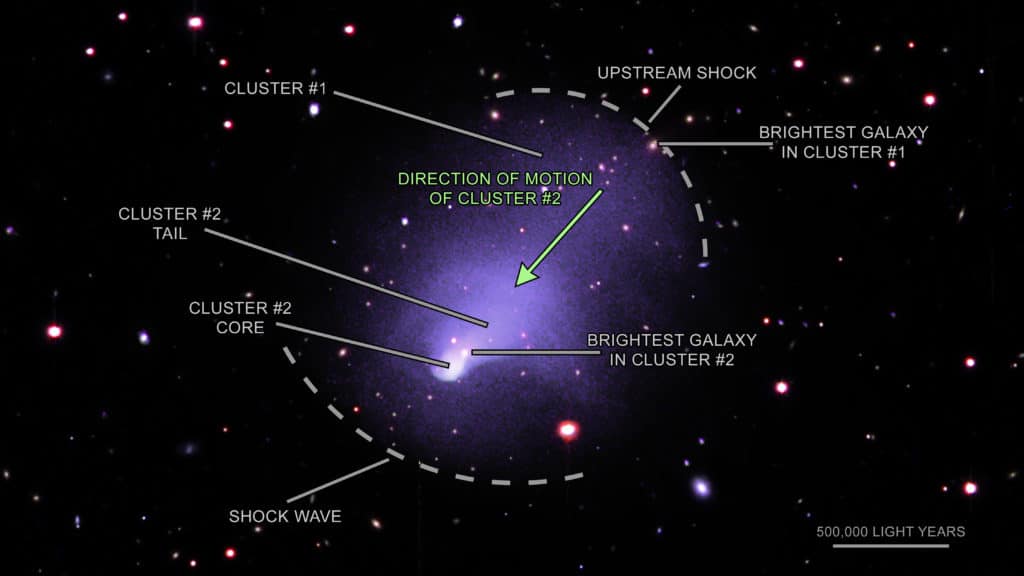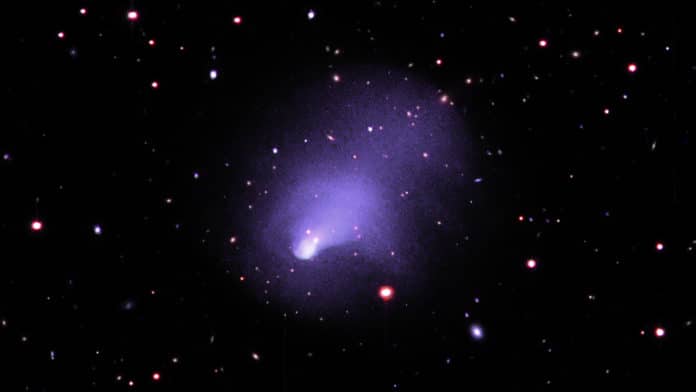NASA recently shared an image of a pair of colliding galaxy clusters located about 2.8 billion light-years from Earth. Known as Abell 2146, it is the result of a collision and merger between two galaxy clusters.
The observation made with NASA‘s Chandra X-ray Observatory suggests a deep connection between some of the most significant, most energetic events in the universe and much smaller, weaker ones powered by our Sun.
Galaxy clusters are among the most significant structures in the universe, including hundreds of galaxies and vast volumes of hot gas and dark matter. Collisions between galaxy clusters produce massive amounts of energy that haven’t been seen since the big bang and provide scientists with physics laboratories that aren’t available on Earth.
In this composite image of Abell 2146, Chandra X-ray data (purple) shows hot gas, and Subaru Telescope optical data shows galaxies (red and white). One cluster moves towards the bottom left and plowed through the other. The hot gas in the former pushes out a shock wave, like a sonic boom generated by a supersonic jet, as it collides with the hot gas in the other cluster.

The shock wave is about 1.6 million light-years long. A second shock wave of similar size is seen behind the collision. Called an “upstream shock,” features arise from the complex interplay of stripped gas from the infalling cluster and the surrounding cluster gas.
Shock waves like those generated by a supersonic jet are collisional shocks involving direct collisions between particles. In Earth’s atmosphere near sea level, gas particles typically travel only about 4 millionths of an inch before colliding with another particle.
Chandra observed Abell 2146 for about 23 days, giving the deepest X-ray image yet obtained of shock fronts in a galaxy cluster. The two shock fronts in Abell 2146 are among the brightest and clearest shock fronts known among galaxy clusters.
Journal Reference:
- H. R. Russell. The structure of cluster merger shocks: turbulent width and the electron heating timescale. DOI: 10.1093/mnras/stac1055
